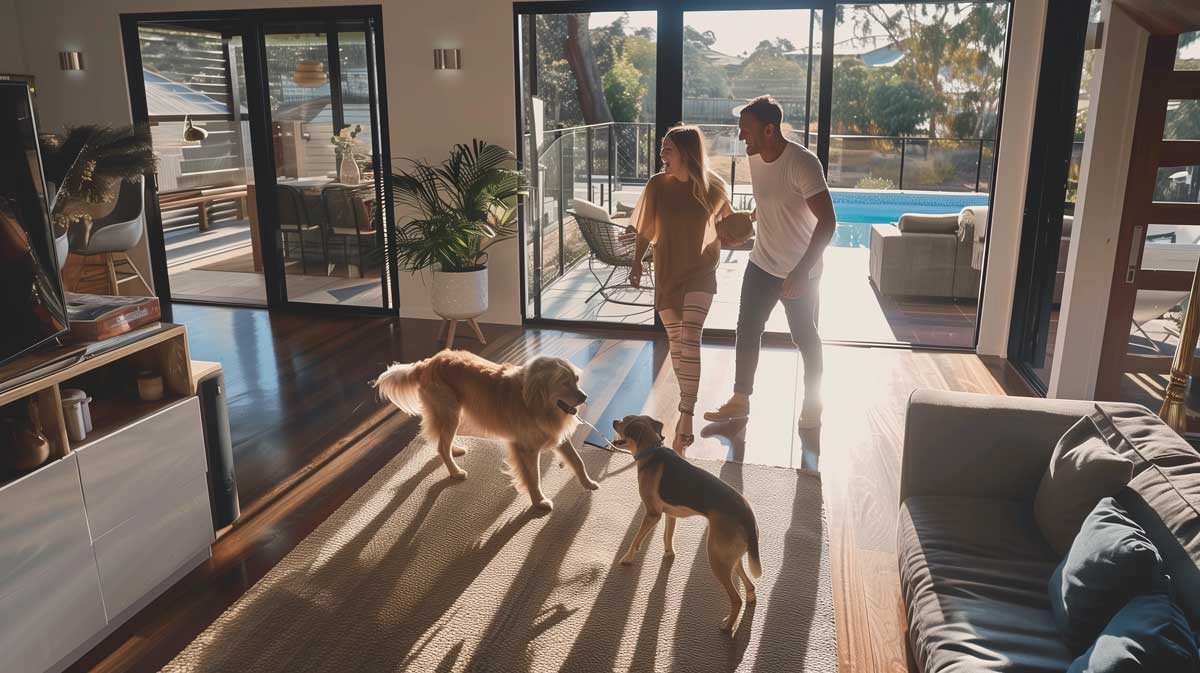Flooring is an often overlooked yet critical component of our living spaces. It not only adds to the room’s aesthetics but also endures considerable wear and tear.
From the pitter-patter of tiny feet to the occasional wine spill, our floors endure a lot. But fear not! Extending the life of your flooring is not the Herculean task it may seem.
In this guide, we’ll discuss strategies for ensuring your floors stay as good as new for years to come.
Whether you’re the proud owner of plush carpets, elegant hardwood, durable vinyl, or chic tiles, these tips are timeless.
Have a Cleaning Routine
Your floors can benefit from a thorough cleaning once a week. Mopping, vacuuming, or sweeping is a great way to prevent particles, such as dust particles, from accumulating on your floors. If left on your floor for too long, they can cause damage.
Hardwood floors, in particular, are susceptible to scratching. As the floor sustains one scratch after another, it begins to fade and become dull. Stains and spills worsen the situation because they can seep into the flooring material and accelerate the rate of decay.
If the topmost layer of your floor is a carpet, you must schedule regular vacuuming. Otherwise, dust and other materials could hide within the fibres and damage your carpet.

Use Area Rugs and Floor Mat
Ever seen the soles of your shoes and wondered if they can impact the floor surface? The contact can cause scratching unless you place a protective barrier on the floor. However, a protective mat can impact the appearance of your floor. The solution is to use floor mats and area rugs to protect your floor. Not only do you reduce wear and tear on the floor, but you also increase the aesthetic appeal of your home.
When there is an occasional mess and spill in the kitchen and entryways, it will land on the mat or rag. The floor beneath the mat or rag may continue to look new and last for a long time.
Protect Floors from Furniture
Furniture often becomes an accidental nemesis to floors. Minimise damage by adding soft pads to the bottoms of chairs, tables, and other heavy items. When moving furniture, always lift it rather than sliding to prevent scratches on hardwood and vinyl. Taking a preventative approach will save you the headache of prematurely repairing or replacing your floors.

Manage Pets
If your household includes furry friends, you understand the extra care their presence requires. Pets’ nails can be harsh on flooring, causing scratches and other damages. Regularly trimming their nails can reduce the impact on your floors. Additionally, place pet-proof area rugs near ‘pet highway’ zones like doors and hallways to further protect your flooring.
Control Indoor Climate
Extreme temperature and humidity fluctuations can damage all types of flooring. Wood, in particular, can expand and contract with changing conditions, leading to cupping or gapping. Installing a humidifier in drier climates and a dehumidifier where necessary ensures your indoor environment stays within the recommended range for your flooring material.
Do Immediate Spill Clean-Up
Spills are inevitable and should be handled immediately, especially for flooring like hardwood, which can stain and warp. Have a clean-up kit ready with appropriate materials for the type of spill and flooring. The key is swift action to prevent liquid from seeping into the floorboards or subfloor, which could potentially cause long-term issues.

Use the Right Cleaning Products and Methods
Use cleaning products specially formulated for your type of flooring. Avoid harsh chemical cleaners or excessive water, which can damage the finish. For example, vinegar should never be used on hardwood floors due to its acidic nature. Always read the manufacturer’s recommendations or consult your flooring installer for the best cleaning practices.
Go for Damage Control and Timely Repairs
Inspect your floors regularly for any damage. Whether it’s a scratch on a plank of laminate or a frayed carpet edge, addressing the issue swiftly is vital to maintaining the overall integrity of your flooring. Even minor issues, if left unattended, can lead to more significant problems that are costlier to repair.
Schedule Regular Professional Maintenance
Professional maintenance may include deep cleaning, polishing, or refinishing, depending on the type of floor. For carpets, it involves steam cleaning, while hardwood floors need to be sanded and refinished every few years. Regular professional attention can revitalise your floors and catch any potential issues before they become major problems.
Strategy Is the Key to Flooring Longevity
Flooring is a long-term investment that merits thoughtful care and attention. By following these simple guidelines and using a bit of foresight, you can protect and preserve your floors for years to come.
Remember, the key to longevity is regular maintenance. It includes preventive measures and swift action when needed.
Your flooring is your home’s foundation. Treat it well, and it will continue to support and beautify your living space for a lifetime. Contact us today for more.
